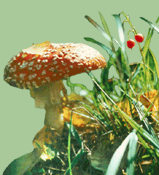The Kingfisher, an emerald of our river landscapes
Olav Rennos feature story presents a colourful small bird with a strong beak and short tail the Kingfisher, which nicely enlivens our modest Nordic landscapes. Although blessed with a bright robe, the Kingfishers lifestyle is rather hidden and therefore we do not know much about its distribution in the past. It prefers shallow rivers and ditches with clear water where it can feed on small fish. The article, illustrated with superb close-ups of the Kingfisher by Sven Zaèek, gives a thorough overview of the species biology and behaviour.
Essay: Urbanisation a birds story by Sven Zaèek
Eesti Loodus enquires
Allan Kokkota explains the necessity for taking courses about the use of pawn packages.
Silver Vahtra reports on the readiness of Estonia to fight against extensive marine pollution.
The history of tar making
Kristel Rattus takes the reader back in time a hundred years and introduces a once well-known and useful means for timber impregnation the tar. It was used for steeping almost everything: boats, cartwheels, roofs, lower logs of houses, skies, fishing nets and even some shoes. It also helped to cure certain illnesses. The article explains how tar was made and what the side products were. The old photographs speak for themselves as well.
Estonias manor parks in autumn
Margit Tohver looks at reasons why we should care about manor parks, although these are the reminders of the 700 years of serfdom. She describes the history, formation, specifics and architecture of manor parks in Estonia.
The Kõinastu islet
Urve Ratas and Reimo Rivis introduce a small, yet unique island near Muhumaa the Kõinastu islet. The islet has diverse landscapes and vegetation. The population reached its peak in the middle of 19th century; nowadays it is used as a summer resort.
European rarities in Estonia: European Green Toad
Ruslan Novitski and Piret Pappel take a fresh glance at the distribution of the European Green Toad in Estonia and find the species at the verge of disappearance. The populations that were strong even in 1980ies, are now gone. The main reason seems to be the loss of open landscape and the loss of waterbodies suitable for breeding.
Interview: the old folks knowledge of Nature lives on in nowadays
Toomas Kukk has interviewed Mall Hiiemäe, a folklorist.
Lichens as indicators of air pollution
Tiiu Tõrra has used lichens as bioindicators and found that the air of Tartu is rather clean. She also describes lichen biomonitoring as a method to determine the level of air pollution. In Tartu, 12 indicator species were used in 2001 and the results show that no specifically polluted regions can be determined.
The Kingdom of fungi in aspen forests in summer and autumn
Kuulo Kalamees gives some good advice for mushroom pickers. The clear and numerous photos of mushrooms help the reader to differentiate between edible and poisonous, protected and common mushrooms.
Fungi on aspen trees
Indrek Sell introduces some interesting, but non-edible species of fungi that grow on the timber of aspen trees.
Birds and reeds, junipers and stones, mud and manors
Toomas Jüriado recommends the Orjaku study trail on the island of Kassari. The trail is well built and supplied with generous information. The visitor can climb look-out towers and try to spot the representatives of the diverse bird fauna. The hike takes about two hours.
| 

![[IN ENGLISH]](images/gb.gif)





